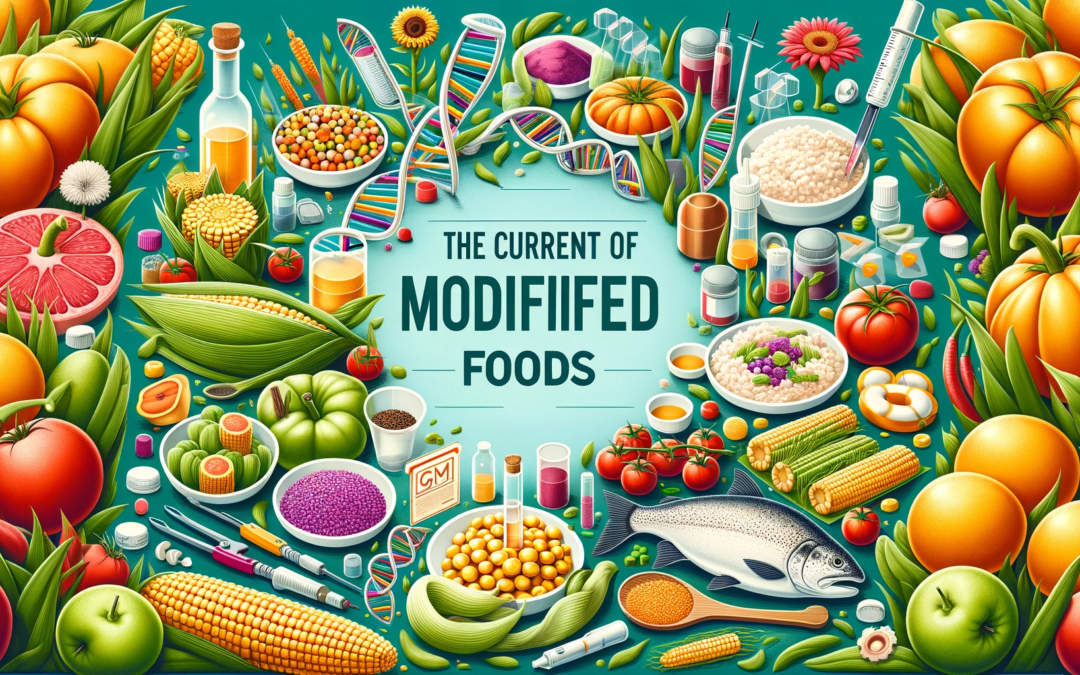In the landscape of modern agriculture and food production, genetically modified foods have become a significant and sometimes controversial presence. Understanding the types of genetically modified (GM) foods available and the regulatory frameworks governing them is key to comprehending the current state and future trajectory of food technology.
Overview of Genetically Modified Foods:
Types of GM Foods:
GM Crops: The most prevalent GM foods are crops like corn, soybeans, canola, and cotton. These crops are often modified for herbicide tolerance, allowing farmers to use weedkillers without damaging the crop. Another common modification is insect resistance, achieved by incorporating genes from the bacterium Bacillus thuringiensis (Bt) that produce a toxin harmful to specific pests.
GM Fruits and Vegetables: Modifications in fruits and vegetables are generally aimed at improving shelf life, nutritional content, and resistance to diseases. For instance, the Flavr Savr tomato was one of the first GM foods marketed for its delayed ripening traits.
GM Animals: While less common, genetically modified animals are also part of the landscape. The AquAdvantage salmon, engineered to grow faster than its non-GM counterpart, is a notable example.
Recent Innovations: Recent advancements include ‘Golden Rice’, genetically modified to produce beta-carotene, a precursor of vitamin A, to address vitamin A deficiency in certain populations. Similarly, efforts are underway to develop crops that can withstand environmental stressors like drought or salinity.
Regulatory Status and Approaches:
Global Perspectives on GMOs:
The regulation of GM foods varies significantly across countries, reflecting diverse public opinions and policy approaches.
United States: In the U.S., GM foods are regulated by the FDA, USDA, and EPA. The regulatory framework focuses on the product rather than the process, meaning that GM foods are assessed based on their characteristics rather than their method of production. Generally, GM foods do not require special labeling unless their nutritional properties differ significantly from their non-GM counterparts.
European Union: The EU adopts a more cautious approach, requiring rigorous safety assessments by the European Food Safety Authority. GM foods must be authorized before entering the market and are subject to stringent labeling requirements.
Other Countries: Nations like Japan and Australia also have strict labeling laws, while some countries, such as Russia and Peru, have bans or restrictions on the cultivation and import of GM foods.
Debate Over Labeling and Transparency:
The issue of labeling GM foods is a focal point of debate. Advocates for mandatory labeling argue for consumer rights to know and choose, while opponents cite the scientific consensus on the safety of approved GM foods and the potential for labels to mislead consumers.
This debate extends to newer genetic editing techniques like CRISPR/Cas9, with discussions ongoing about whether foods derived from these methods should be classified and regulated as GM foods.
Conclusion:
The current state of genetically modified foods reflects a complex interplay of technological advancement, regulatory policies, and public perception. While the market continues to see a diverse array of GM foods, regulatory stances vary widely, underscoring the global divergence in acceptance and approach to these foods. As biotechnological innovations advance, regulatory frameworks and public dialogues will need to evolve, balancing the benefits of genetic modification with ethical considerations and consumer rights. The future of GM foods will likely continue to be a dynamic and debated aspect of global food security and agricultural policy.










